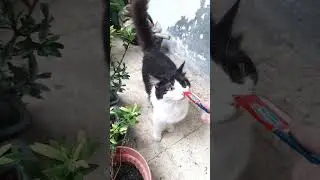PROXMOX: Root ZFS on Ubuntu VM - 6 Drive Raid-z2
This video covers a lot of bases including creating a Proxmox VM, adding multiple virtual drives and creating a ZFS RAIDZ2 which protects the Root Linux OS environment. In addition, we cover common boot problems and show you how to create your datapool with the remaining space.
Video Helper Material
Download the zfs-installer.sh script here (no warranty - use at your own risk): https://cloud.compumatter.biz/s/93AEj...
Thet scp script we use to pull in the script from another networked or remote computer
scp -P 22 [email protected]:/path/to/file/zfs-installer.sh .
the one liner command to format the 4th partition on all attached drives
for drive in $(lsblk -no NAME | grep -E '^sd.$'); do sudo mkfs.ext4 /dev/${drive}4; done
the one liner command to reveal the disk-by-id partition names on each drive that has a 4th partition
ls -l /dev/disk/by-id | grep part | sort -k 10 | grep part4
the zpool create command
zpool create -f -o cachefile=/etc/zfs/zpool.cache -o ashift=12 -o autotrim=on -d -o feature@async_destroy=enabled -o feature@bookmarks=enabled -o feature@embedded_data=enabled -o feature@empty_bpobj=enabled -o feature@enabled_txg=enabled -o feature@extensible_dataset=enabled -o feature@filesystem_limits=enabled -o feature@hole_birth=enabled -o feature@large_blocks=enabled -o feature@lz4_compress=enabled -o feature@spacemap_histogram=enabled -O acltype=posixacl -O compression=lz4 -O devices=off -O normalization=formD -O relatime=off -O atime=off -O xattr=sa -O canmount=off -O mountpoint=none datapool_yourpoolname raidz2 yourdriveidentifier-1 yourdriveidentifier-2 yourdriveidentifier-3 yourdriveidentifier-4 yourdriveidentifier-5 yourdriveidentifier-6
Our grateful compliment to the original script. Ours is an evolution that would not have happened without it:
https://github.com/64kramsystem/zfs-i...
** This is not the one we use in our example - download ours above







